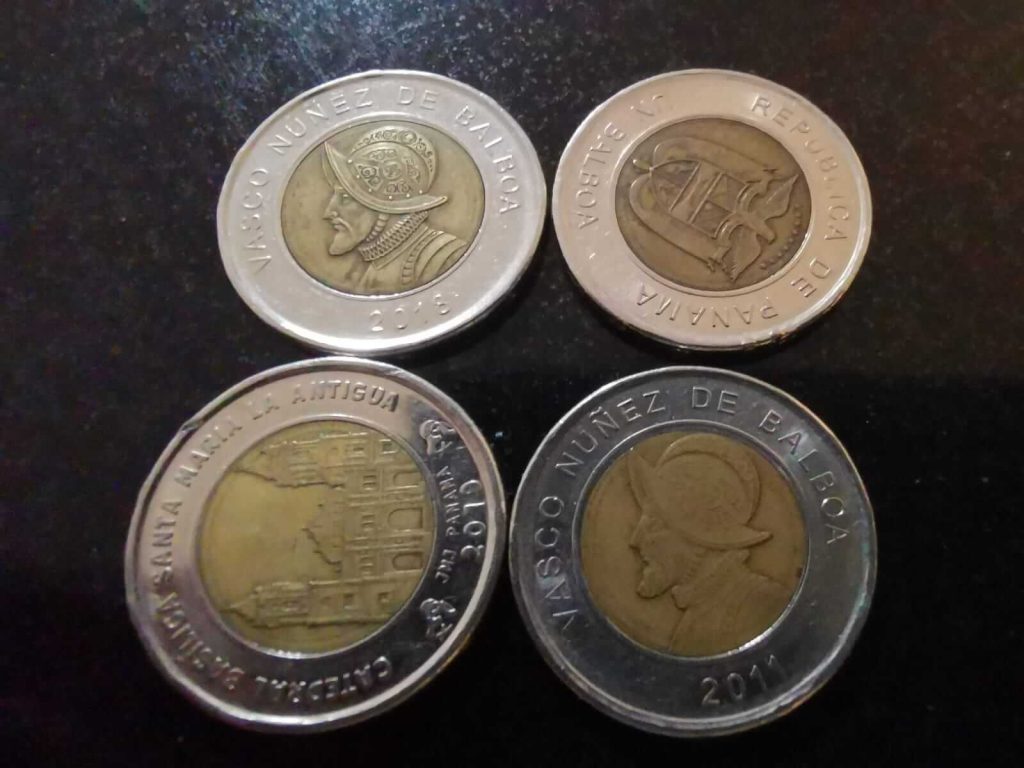Panamanian currency, introduced in 1904 and replacing Colombian peso, is called Balboa and subdivided into 100 centesimos with coins similar to those in use within the United States dollar system.
Panama has strong economic ties with the US; thus its primary circulating medium is US Dollar banknotes. This fact reveals Panama’s strong dependence on this monetary unit for economic prosperity.
The Balboa Panama Currency
Panama, situated in the tropical zone, is a vibrant country where cities meet wild rainforests and vibrant cultures. Due to its central location and global trade routes, it serves as an essential hub for international trade and commerce; thus providing significant contributions from diverse sectors including services, industry and agriculture – the Panama Canal also plays a pivotal role in Panama’s development as it connects Atlantic and Pacific oceans.
In 1904, Panama introduced the Balboa as its official currency. Pegged 1:1 to the U.S. Dollar, this stable unit of exchange came out initially with coins sized between 2 1/2, five, 10, 25 and 50 centesimos that closely resemble their U.S. equivalents in size and composition.
The Panamanian Balboa has found international acceptance and is designated with an ISO 4217 currency code PAB to facilitate global transactions and ensure its identification and acceptance in international financial markets. Furthermore, this gives Panamanian Balboa its own identity separate from that of US Dollar while reinforcing its role on global financial markets.
People send money to Panama for many reasons, including supporting family members and tuition payments or business transactions. Prepaid travel cards supporting Panamanian balboa offer better exchange rates with lower fees than credit and debit cards.
History
Panama’s national currency, the Balboa, was introduced in 1904. Named for Spanish explorer Vasco Nunez de Balboa, it is subdivided into 100 centesimos and shares parity with the US Dollar which is widely accepted throughout Panama. Both currencies represent their country’s heritage and culture through design; US Dollar banknotes feature images of founding fathers while Panamanian coins feature Coat of Arms designs or local plants and animals as their design motif.
Panama’s strong relationship with the US Dollar brings many advantages for both parties involved. It enables it to foster a stable financial environment, attract foreign investment, and facilitate international trade. Furthermore, peg the Balboa 1:1 to the USD to facilitate smooth monetary transactions and limit exposure to unstable global exchange rates.
Though Panamanians pride themselves on the Panamanian Balboa as a national emblem, they do not wish to abandon it in favor of an alternative currency. After witnessing several Latin American nations struggle with high inflation rates, Panamanians remain dedicated to maintaining low rates.
Cash may be accepted everywhere, but using a prepaid travel card may be wiser. ATMs can be found across the country and many banks provide withdrawal options that meet individual preferences. Credit cards and e-wallets may also be accepted at restaurants or supermarkets; most businesses don’t accept travelers checks (though some might), and if accepted require a 45-day hold period.
Currency exchange
The Balboa Panama Currency is the official currency of Panama and divided into 100 centesimos, replacing Colombian peso in 1904. The Balboa is tied to the US Dollar; one Balboa equals one USD. You can usually pay with credit and debit cards while having cash on hand can come in handy when paying for small purchases and tips.
Before traveling to Panama, money exchange is easily achievable from home or bank – you don’t even have to leave the house! Exchange rates tend to be competitive when using specialist providers like Currency UK; their team will help facilitate this process and may help secure better rates than otherwise available.
Panama uses both USD and its own currency, the Balboa. Coins in Panama resemble their US equivalents in terms of size; popular denominations include 5, 10, 25 and 50 cent pieces as well as silver and gold pieces.
If traveling to Panama, cash will most likely be your best bet as most hotels, restaurants and tourist spots accept American dollars as payment. Wise Account or Revolut offer multi-currency travel cards with exceptionally low fees and excellent exchange rates that could also prove handy.
Taxes
Panamanians take great pride in the resilience and social and political stability of their country, evidenced by its position at 59th on the Human Development Index (HDI), which measures health, education, income, standards of living as well as globalization, agriculture tourism and energy industries – fuelling its economy along with strong ties to both America and beyond.
The Balboa Panama Currency has been pegged to the US Dollar since 1904 and remains stable, though inflation causes fluctuations. Furthermore, its role as a global reserve currency helps maintain relative stability for this currency.
Though most merchants in Panama accept credit and debit cards, travelers should bring some cash with them for smaller purchases, tipping, and emergencies. While banks provide prepaid travel cards that can be loaded with Balboa money, fees and exchange rates can add up quickly; Wise Account and Revolut offer lower cost travel card solutions with free use abroad.
Panamanians send money home for various reasons, from supporting family and friends to closing business transactions. When planning international money transfers, using specialized services that offer lower fees and improved exchange rates than banks may be advantageous; Monito can help you compare providers to find the ideal provider for you!

